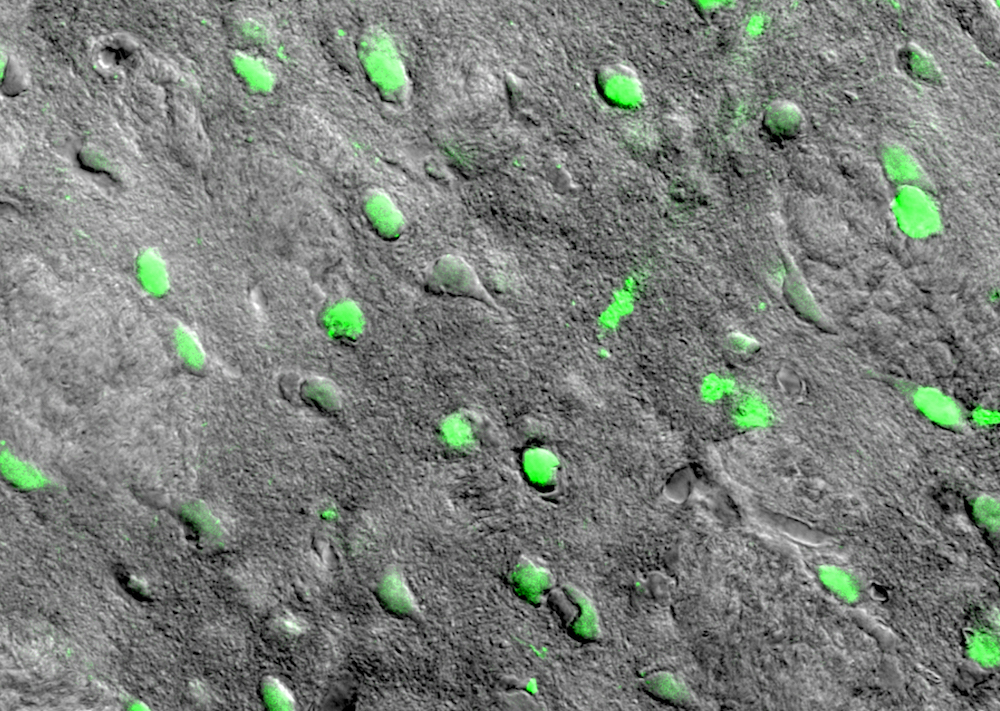
Using magnetic fields, scientists can activate specific brain cells in mice and make them run, spin and freeze, new research shows.
This could help scientists pinpoint the specific brain circuits animals use for certain behaviors, which could in turn help scientists pinpoint with greater accuracy which brain areas are involved in those same behaviors in humans, said Arnd Pralle, a biophysicist at the University at Buffalo in New York.
The main goal is to develop tools that can help scientists study the brains of laboratory animals to see how they encode emotions and behaviors, Pralle told Live Science. "We can translate a lot of that to human brains," he added. [Top 10 Mysteries of the Mind]
Brain control
Scientists have used implanted electrodes to control the movement and thoughts of monkeys, while others have genetically engineered brain circuits that turn on with a beam of laser light. Brain implants have even allowed one monkey to control the movements of another, a 2014 experiment found. However, those methods involve either implanting electrodes into the brain or hard-wiring a bulky cable into the brain. But those procedures can do damage to the animals, and essentially keeps them tethered to a cable all the time, Pralle said.
Transcranial magnetic stimulation, meanwhile, is FDA-approved to treat depression that does not respond to medication, but it acts on a wide area of the brain and is not targeted to specific networks. Scientists, however, still don't fully understand why it works, Pralle said.
In the current study, Pralle and his colleagues used magnetic fields to turn on individual brain cells. Ordinarily, magnetic fields pass through biological tissue without affecting it, so the team needed a way to translate the magnetic stimulation into heat energy. To accomplish this task, they injected tiny magnetic nanoparticles that translated oscillating magnetic fields into heat energy. These nanoparticles then latch onto the surface of brain cells. When the cells heat up, temperature-sensitive channels on the neurons opened, flooding the channels with positive ions (charged particles) and causing the neurons to fire. (Normally, mice have very few heat-sensitive channels in their brains, so the team genetically engineered the mice to carry these channels.)
Using this technique, the team manipulated the mice's specific movements, causing them to spin around, run, and even freeze and lose control of their extremities.
Sign up for the Live Science daily newsletter now
Get the world’s most fascinating discoveries delivered straight to your inbox.
The new technique has advantages over other methods for manipulating brain function in animals, Pralle said. For instance, the magnetic field they use operates over a larger region of the brain, meaning they could target separate brain regions at the same time, he said. In primates, multiple brain regions must often be activated to perform specific tasks, he added.
The technique, with its use of genetic engineering and nanoparticles, is not intended to be used in human brains, and certainly not to manipulate or conduct mind-control on humans, Pralle said. Instead, inducing certain behaviors in animals is a way to pinpoint the brain regions responsible for these tasks, he said.
One day, the understanding of brain function gleaned from these animals could pinpoint the brain circuits needed to treat conditions such as Parkinson's in humans, Pralle said.
"We might use different methods to stimulate the brain," Pralle said. "But knowing which circuit does what, you don't have to go dig around."
The findings were published Aug. 15 in the journal eLife.
Originally published on Live Science.

Tia is the managing editor and was previously a senior writer for Live Science. Her work has appeared in Scientific American, Wired.com and other outlets. She holds a master's degree in bioengineering from the University of Washington, a graduate certificate in science writing from UC Santa Cruz and a bachelor's degree in mechanical engineering from the University of Texas at Austin. Tia was part of a team at the Milwaukee Journal Sentinel that published the Empty Cradles series on preterm births, which won multiple awards, including the 2012 Casey Medal for Meritorious Journalism.









